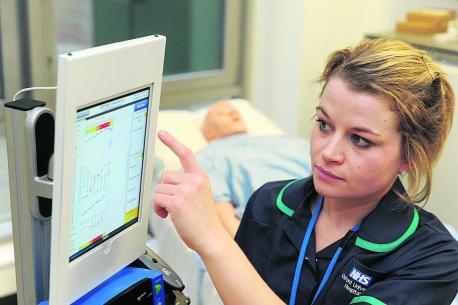Projects
Tremor REMote Reocrding (TREMOR)
We have been developing a set of methods to objectively measure signs of Parkinson’s and other movement disorders. This has included methods to estimate the degree of Bradykinesia (the core sign of Parkinson’s) and hand tremor frequency.
Over the next 2 years, we will be developing and validating computer vision/ML methods to measure hand tremor amplitude and frequency. We will be incorporating these methods into a smartphone. Our hope is that this tool could be used to objectively measure the progression of disease, to assist diagnosis, and as an objective biomarker in research.
Deep learning for cardiac disease diagnosis
As part of the annual George L Moody Physionet challenge, we have been developing machine learning models to identify cardiac conditions from both ECG and digital stethoscopes. In previous years, we developed an SE-Resnet to identify 27 conditions (coming 2nd in the 2020 challenge). In 2021, we focused on ensuring our model generalised better to unseen data, using adversarial learning for open-set domain transfer. In 2022, we are working on identifying heart murmurs from digital stethoscope audio recordings.
Vital sign trajectories
Early Warning Scores are used in clinical practice to convert a set of vital sign observations into a single number. This number denotes how clinically abnormal someone is, compared to the population. It is used to identify patients who may be deteriorating. In reality, experienced clinicians take into account the historical trends in vital signs when making patient assessments. We aim to replicate this thinking by developing models that can sensibly incorporate trend information. To develop these models, we are using (i) continuously-recorded vital sign data from ambulatory patients treated at the Christie hospital (ii) intermittently-recorded vital sign data from all in-hospital patients treated in the OUH Trust.
ML for digital pain manikins
Pain manikins are body-shaped diagrams that patients use to mark where they are in pain. Digital versions of pain manikins also allow patients to record intensity of pain. Manchester have recently developed and tested a new digital pain manikin. We are now investigating how this data may best be used for clinical decision making. In particular, we are investigating:
- Machine learning for diagnosis
- Longituidinal analysis to determine risk of deterioration
- Harmonisation of analysis between different manikin vendors
SEND - System for Electronic Notification and Documentation

The SEND system is an electronic platform that allows nurses to electronically record vital signs by the bedside, which are used to automatically calculate an Early Warning Score. Clinicians may review this information from anywhere within the hospital. Originally developed for Oxford University Hospitals Foundation Trust (OUH), SEND is currently used in everyday practice at five hospitals. SEND was highlighted as a key project in the OUH's success as e-Health Insider's Digital Hospital of the Year. The project was also short-listed in 2015 for the Chartered Institute of Ergonomics and Human Factors design awards, and the 2018 HSJ Value awards.
Following its successful implementation, we are studying the impact of the new system. The Technology Implementation Evaluation (TIE) study has measured times for nurses to take and record vital signs before and after the introduction of SEND to quantify potential time savings. The iSEND study, aims to evaluate the clinical benefit of SEND via a step-wedge methodology by determining whether clinical interventions are prompter using SEND. Qualitative data from System Usability Questionnaires and semi-structured interviews are also being used to assess the usability and clinical acceptance of the system.